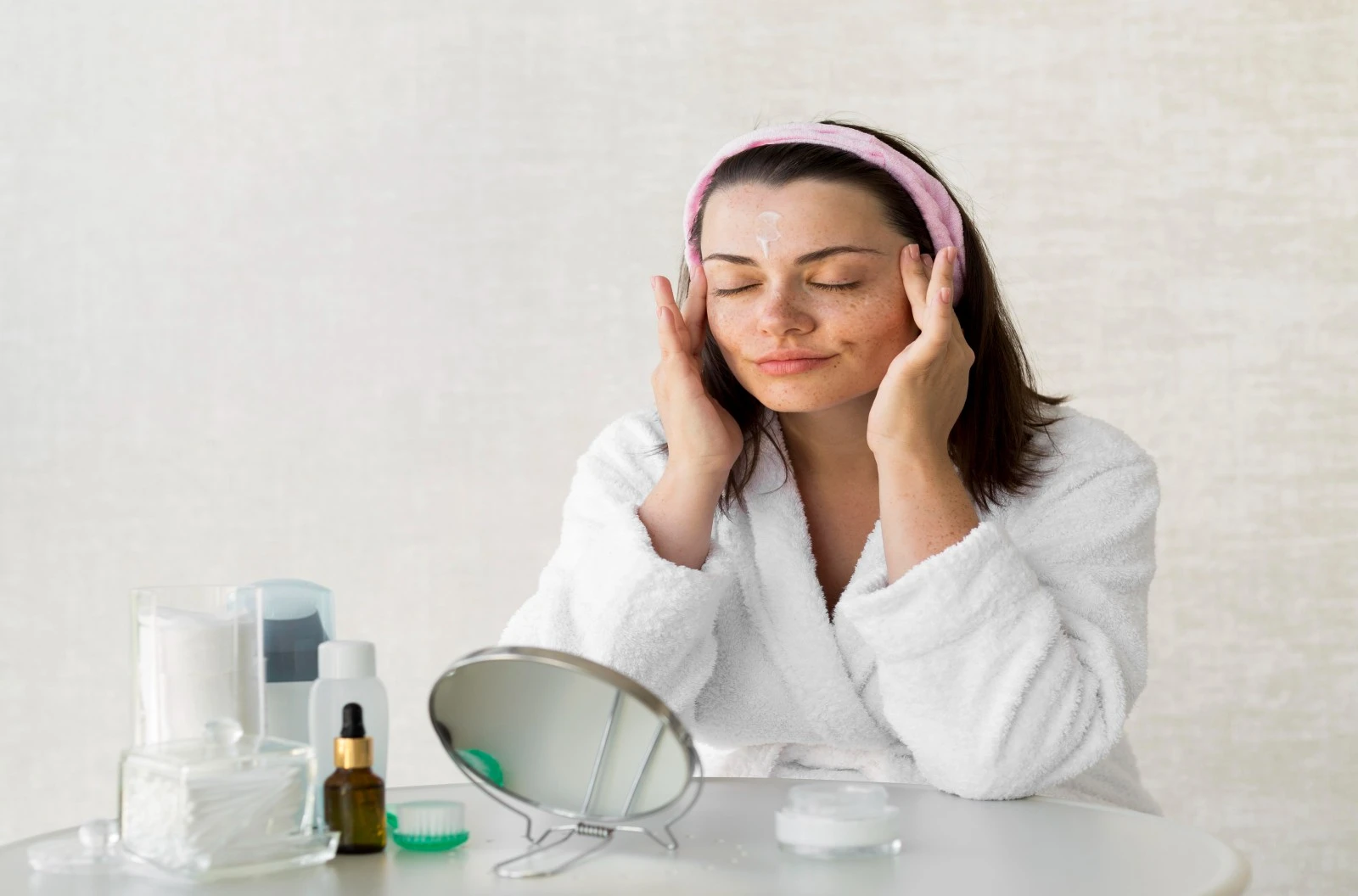Cyclopentasiloxane hydrates the skin without making it feel heavy or oily. It forms a thin barrier that keeps moisture in while letting the skin breathe.
This ingredient makes the skin surface smooth and silky. It temporarily fills in fine lines and wrinkles, making the skin look even and soft.
Cyclopentasiloxane helps skincare products spread easily and evenly. This ensures that all parts of the skin get the active ingredients.
Cyclopentasiloxane evaporates quickly after application, leaving beneficial ingredients on the skin without any greasy feel. This makes it ideal for products that need to feel light and non-sticky.
Moisturizers: Provides hydration and makes the skin feel soft and smooth.
Primers: This creates a smooth base for makeup, helping it last longer and look better.
Serums: Helps active ingredients absorb better into the skin.
Sunscreens: Ensures even coverage for effective protection without feeling heavy.
By understanding the benefits and common uses of cyclopentasiloxane for skin, you can see why this ingredient is popular in skincare. It provides lightweight moisture, improves skin texture, and enhances the overall application experience, making it a valuable part of many skincare products.
Is cyclopentasiloxane safe for skin? This is a common question for those looking to understand the safety and effects of this widely used skincare ingredient. Cyclopentasiloxane is a type of silicone that has undergone extensive testing to ensure its safety for use in cosmetic and personal care products.
The Cosmetic Ingredient Review (CIR), an independent panel of experts, has evaluated the safety of cyclopentasiloxane. The CIR concluded that cyclopentasiloxane is safe for use in cosmetics and personal care products when used as directed.
The SCCS, which assesses the safety of consumer products in Europe, also reviewed cyclopentasiloxane. They found it safe for use in cosmetic products, supporting its widespread use in the industry.
Cyclopentasiloxane is approved for use in cosmetics and personal care products by regulatory authorities in multiple countries, including the United States and Europe.
Cyclopentasiloxane is generally non-irritating, making it suitable for all skin types, including sensitive skin. It does not cause redness or allergic reactions in most users, which is why it is often included in products designed for sensitive skin.
Cyclopentasiloxane is non-comedogenic, meaning it does not clog pores. This is particularly important for individuals with acne-prone skin, as it ensures that the product does not contribute to breakouts.
Products containing cyclopentasiloxane are often dermatologically tested to ensure they are safe and effective for skin use. These tests typically involve patch tests to check for any adverse reactions.
Numerous scientific studies have been conducted to evaluate the safety and efficacy of cyclopentasiloxane. These studies have consistently shown that it is safe for topical application in the concentrations typically used in cosmetic products.
While cyclopentasiloxane is safe for skin, it is important to note that overuse can lead to build-up on the skin. This can be avoided by using products as directed and incorporating regular cleansing into your skincare routine.
There are some environmental concerns regarding the persistence of silicones like cyclopentasiloxane in the environment. Consumers looking to minimize their environmental footprint can choose products from brands that prioritize sustainability and use biodegradable ingredients.
Is cyclopentasiloxane safe for skin? The answer, based on extensive research and regulatory reviews, is yes. Cyclopentasiloxane is a safe and effective ingredient in skincare products, offering benefits such as lightweight moisturization, improved skin texture, and enhanced product spreadability. Its non-irritating and non-comedogenic properties make it suitable for all skin types, including sensitive and acne-prone skin. By understanding the safety profile of cyclopentasiloxane, consumers can confidently include products containing this ingredient in their skincare routines.
Does cyclopentasiloxane cause acne? The short answer is no, cyclopentasiloxane does not cause acne. This silicone is non-comedogenic, meaning it does not clog pores, which is a primary cause of acne. Here’s a deeper look into why cyclopentasiloxane is safe for acne-prone skin and how it works.
One of the key properties of cyclopentasiloxane is its lightweight nature and quick evaporation. It creates a smooth, silky barrier on the skin without leaving a heavy or greasy residue. This helps to prevent the accumulation of oil and dirt, which can contribute to acne development.
Products containing cyclopentasiloxane often undergo dermatological testing to ensure they are safe for use on acne-prone skin. These tests typically involve patch tests and clinical trials to monitor any adverse reactions, including the potential for acne development.
Scientific studies have evaluated the safety and efficacy of cyclopentasiloxane in skincare products. These studies have found that it is generally safe and non-irritating, with no evidence to suggest that it causes acne. Its non-comedogenic properties are well-documented in the scientific literature.
While cyclopentasiloxane itself does not cause acne, it is important to consider other factors that can influence acne development:
The overall formulation of the skincare product plays a significant role in its impact on the skin. Other ingredients in the product may have different effects on acne-prone skin. It is important to look at the entire ingredient list and choose products that are specifically formulated for acne-prone skin.
Individual skin type and sensitivity can influence how the skin reacts to certain ingredients. While cyclopentasiloxane is generally safe for most skin types, it is always advisable to perform a patch test before using a new product, especially for those with sensitive or reactive skin.
Maintaining a proper skincare routine, including regular cleansing and the use of non-comedogenic products, is crucial for managing acne. Even if cyclopentasiloxane is safe, improper skincare practices can contribute to acne development.
To ensure that cyclopentasiloxane does not cause adverse reactions, perform a patch test before fully incorporating a new product into your skincare routine. Apply a small amount of the product to a discreet area of skin and monitor for any signs of irritation or breakouts over 24-48 hours.
Does cyclopentasiloxane cause acne? The evidence suggests that it does not. Cyclopentasiloxane is non-comedogenic, lightweight, and quick-evaporating, making it an appropriate ingredient for acne-prone skin. However, the overall formulation of the product and individual skin sensitivity should be considered. By choosing well-formulated, non-comedogenic products and maintaining a proper skincare routine, individuals with acne-prone skin can safely use products containing cyclopentasiloxane.




